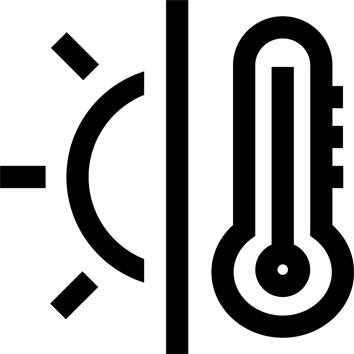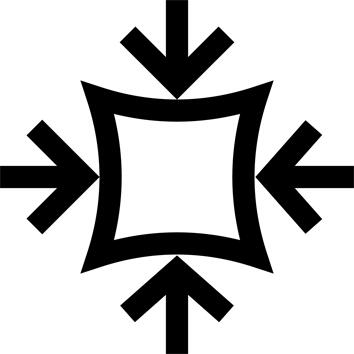How warm is this down jacket?
This down jacket, worn as a 3rd layer, was validated for an active comfort temperature of -18°C in a protocol test in a thermal chamber.
The mannequin is wearing a long-sleeved synthetic t-shirt and a light fleece. He walks with a simulated wind speed of 5 km/h.
We also tested this model "statically", with a comfort temperature of -5°C.
The advantages of duck down and feather filling
Down's capacity to expand gives it 3 qualities for mountain sports:
- Thermal insulation thanks to the air trapped in the down and feathers
- Ultra-lightness: for equal warmth, feathers are lighter than synthetic wadding. This saves even more weight in the backpack
- Ultra compressibility
How do you measure the loft of down and feather fillings?
Loft represents the thermal insulation capacity of down by "trapping" a certain volume of air. It is expressed in cuin. So, the more lofty the down (the higher the cuin number), the more space it occupies, the more air it traps, and therefore the more insulating it is. For this down jacket, filled with 85% down and 15% feathers, the loft is guaranteed to be greater than or equal to 660 cuin (international standard).
Reduced risk of feather loss
The main seams of the boxes containing the down and feathers are heat-bonded rather than sewn to prevent feather loss.
Component water repellency (not to be confused with waterproofing)
The water repellency of a fabric is its ability to let water slide off its surface without absorbing it.
This means that the fabric does not become waterlogged, and remains light and warm.
The material of this down jacket is water-repellent; however, we advise you to wear a waterproof jacket over it for prolonged exposure to the rain.
Water repellency is achieved by a treatment applied to the outside of the fabric, but may be altered by use.
We recommend reactivating it each time you wash.
How do I care for a down comforter?
This down jacket will be worn all winter, and will certainly need to be washed.
Our advice:
1/ Machine wash with a detergent for down or technical sportswear, at 30°, with 2 or 3 tennis balls. Spin gently.
2/ Tumble-dry on cotton setting, with 2 or 3 tennis balls, repeat 2 or 3 times until completely dry.
How do I reactivate water-repellency?
After cleaning your down jacket, we recommend using a water-repellency reactivator liquid to maintain the hydrophobic properties of the outer fabric. It regenerates the fabric's water repellency and optimizes the performance of your garment throughout its lifetime.
An addict? Here's how to repair your down jacket
On a trek, a tear in your down jacket can happen! The good news is that it can be repaired with a patch to prevent the tear from getting bigger or feathers from escaping. Don't feel comfortable doing the repair yourself? Don't panic! Some Decathlon workshops offer an in-store repair service to mend your down jacket using an iron-on patch.
Upholstery weight
S: 171 g
M: 180 g
L: 189 g
XL: 200 g
2XL: 212 g
3XL: 224 g
Weight
XS : 0.54 kg
M : 0.576 kg
2XL : 0.682 kg












